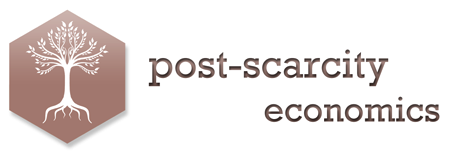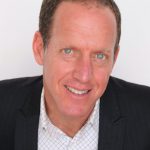 I just upped my pledge to $250 to put a remarkable Kickstarter project over the top. Symbionomics, stories of a new economy is high concept, with systemic change as its goal. I am a serial startup and turnaround entrepreneur with a record of seven out of eight successful companies become a professional investor (after selling several companies you realize every company is a future’s contract). I consider myself experienced, yet I have found that that Kickstarter and its crowdsourced funding peers like Indiegogo, deliver a far higher and more frequent and continuous level of emotional involvement linked to a funding commitment than I have experienced before. We, the team behind Hub Bay Area, Good Capital and Socap, have a lot to learn from them.
I just upped my pledge to $250 to put a remarkable Kickstarter project over the top. Symbionomics, stories of a new economy is high concept, with systemic change as its goal. I am a serial startup and turnaround entrepreneur with a record of seven out of eight successful companies become a professional investor (after selling several companies you realize every company is a future’s contract). I consider myself experienced, yet I have found that that Kickstarter and its crowdsourced funding peers like Indiegogo, deliver a far higher and more frequent and continuous level of emotional involvement linked to a funding commitment than I have experienced before. We, the team behind Hub Bay Area, Good Capital and Socap, have a lot to learn from them.
The Hub Bay Area has recently raised enough money from high net worth individuals and family foundations to start a seed fund for startup entrepreneurs working out of the two hubs we operate, the large and expanding one in San Francisco and the smaller one in Berkeley where we started.
That money came from people like Lloyd Elder, who built Google’s infinitely scalable server network. I met Lloyd through the remarkable Leila Janah, the globe trotting leader of Samasource. I really got to know Lloyd at a gala that featured Newark’s celebrity mayor, Cory Booker, followed up by a series of conversations at the Hub Soma where we both got comfortable with each other and our respective goals for our time, talent and financial resources. I am looking forward to what Lloyd can bring these startup entrepreneurs with his deep system thinking. Other investors in that high risk, high potential social impact startup fund were from family foundations working who have invested in our first Good Capital fund, the Social Enterprise Expansion Fund. Those new investments also were the product of long relationships that have grown in mutual trust over time.
We are doing a joint venture on the startup HubCap fund with Gray Ghost’s First Light.There are innovative crowdsourced due dilligence elements in the model Bob Patillo concieved and proved out in that model that I admit I was initially skeptical about but that proved to work. Like the best partnerships, that one has grown deeper overtime as we have looked for ways to do more things together.
We have a latent element of crowdsourced funding in our new HubCap seed fund, that my partner Tim Freundlich, a true genius, has devised using his Giving Assets platform that he spun out of Calvert. It allows for people to invest in a for profit social enterprise or donate to a non profit social enterprise and get a 35% tax deduction, based on their income. It’s a real thing of beauty in its robust flexibility. But we have no real online crowdsourcing strategy to help make that happen. We have printed up some response envelopes, but I see from my recent foray into Kickstarter and Indiegogo that some people have figured it out in a way I am only starting to glimpse.
The emotional commitment to these two startups success I have, the amount of time I have thought about them and the feeling of belonging these tiny investments have given me is something new, and powerful. I do not know how other people feel about their commitments on these platforms, but it’s something to look at closely.
At Socapeurope we plan to give awards for marketplace design, and we have been paying attention to the impact investing marketplaces that are starting to gain momentum, like Mission Markets, where one of our Good Capital companies is participating in a potential followon eight figure fund raise. A key element is how you price in mission in a way that it can stand up strongly against demands for pure financial return.
It’s clear, however, that there is something extremely powerful going on in these peer to peer, crowdsourced marketplaces where the collective intelligence of a community comes together to make something happen for raw, high concept startups with a lot of potential. I want to get smarter about this and make it a key part of what we do in Amsterdam May 30-June 1, when we go back to where the capital markets first took shape 400 years ago.




